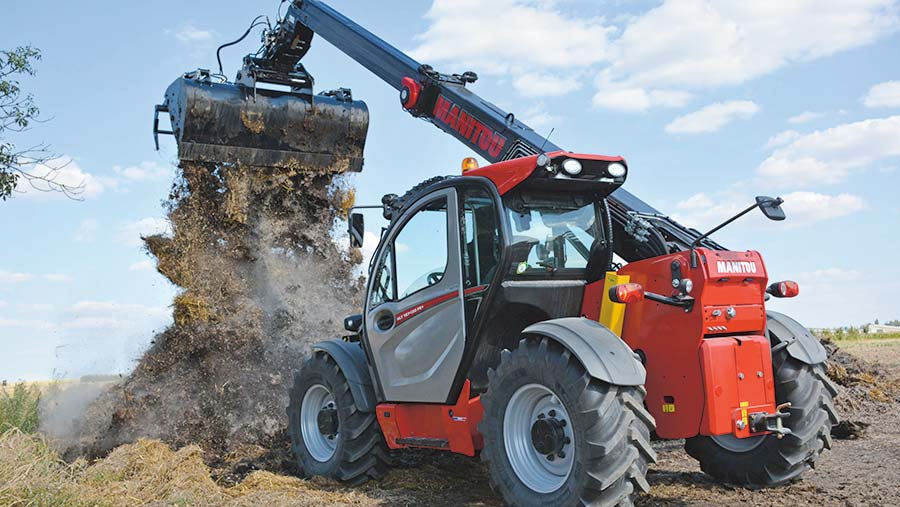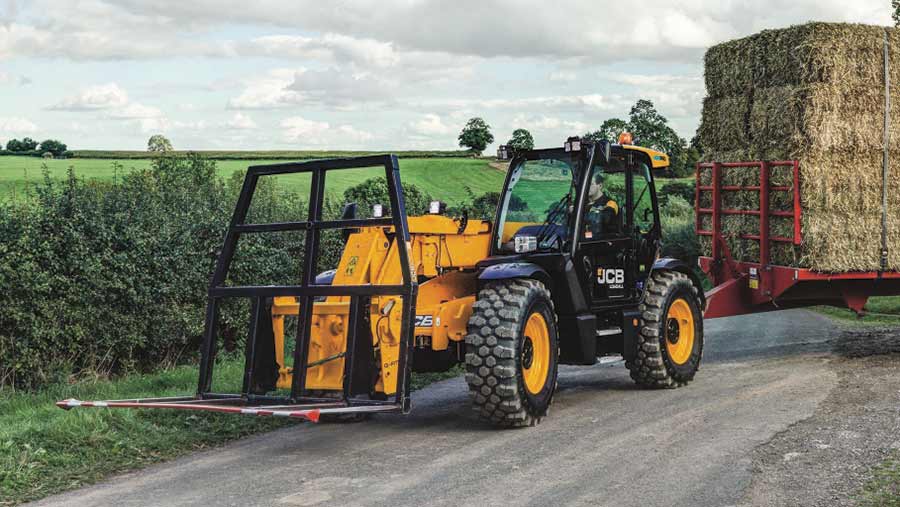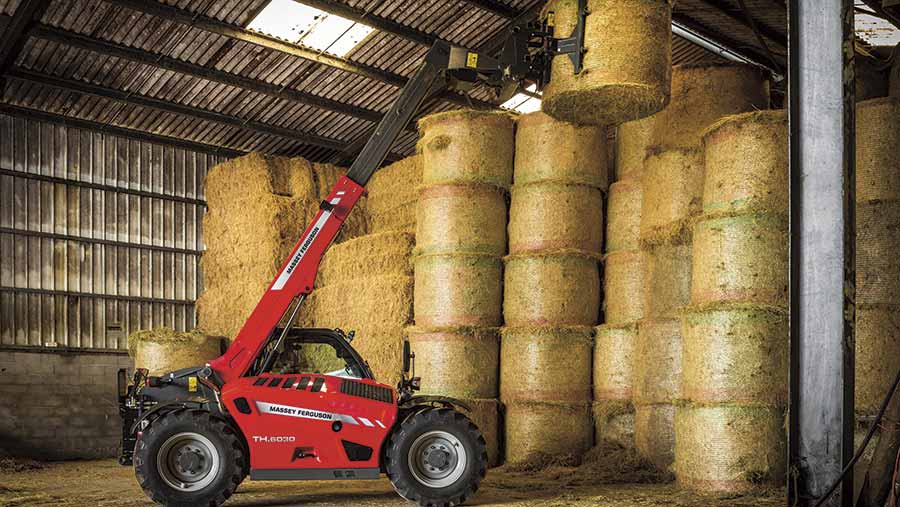New developments to telehandlers offer improved efficiency
Telehandlers are one of the hardest-worked machines on arable farms and a host of new developments promise to streamline operations such as handling bags of fertiliser and seed.
With their latest machines, a trio of telehandler manufacturers have pulled out all the stops with new transmission and control developments – as well as enhanced equipment levels – to improve the operating experience.
The transmission developments aim either to offer a choice of drive systems to optimise performance for the tasks most often undertaken or to provide the best characteristics of hydrostatic and powershift transmissions in one machine.
Manitou
Manitou has taken the former route with its new mid-size MLT handlers, which herald changes coming across the range.
They include the introduction of two hydrostatic transmissions as an alternative to a more conventional torque converter and gearbox set-up.
M-Varioshift is available on the 101hp 3t/6m Manitou 630-105 in place of a traditional power shuttle transmission. It has a two-speed gearbox to provide infinitely variable speed control in two stages – up to 18kph and up to 40kph.
The French manufacturer’s M-Vario Plus is a more novel hydrostatic solution: it does away with the gearbox and instead uses a pair of radial hydraulic motors to provide seamless speed adjustment from zero to 40kph.
Moreover, the transmission – developed in association with ZF – allows forward speed to be set separately from engine speed. This is an increasingly common feature that suits telehandlers operating equipment that requires a slow travel speed, but sufficient revs to power hydraulic motors.
The new transmission is available on three models – the 3.5t/6m 635-140, the 4.1t/7m 741-140 and the 4t/9m 940-140, all of which are powered by a 136hp version of the 3.6m Deutz engine used in the new handlers.
They also get Manitou’s highest-output hydraulics, which deliver up to 170 litres/min from a variable-flow piston pump, and a regenerative hydraulics option to speed up boom drop time without having to pile on the revs.
Switches that can be repositioned is a novel feature in the new cab of these machines: each has its own microchip sending instructions to the control system, so operators can position them in available slots as they wish.
JCB
JCB’s in-house developed DualTech VT is, quite literally, two transmissions in one.
There is a hydrostatic section providing infinitely variable speed control up to 19kph and a powershift section with three steps and torque lock-up for speeds above that.
The operator does not have to switch from one to the other because a clutch mechanism seamlessly engages either section. However, he can select “power” and “economy” modes to suit different applications and situations.
The “power” mode allows the transmission to exploit full engine revs and power output in both hydrostatic and powershift drive.
In contrast, the “economy” mode puts a 1,700rpm ceiling on engine revs, changes the engine’s power delivery characteristics and initiates earlier up-shifts to use the minimum amount of fuel.
In addition, ground speed can be regulated separately from engine revs for implements that require good hydraulic flow for motors, but a slow and consistent working speed.
The control system memorises the last settings and returns to them after an interruption – to empty a sweeper bucket, for example – at the flick of a switch.
DualTech VT is standard on Agri Pro versions of three existing Loadall handlers – the 3.1t/7m 531-70, the 3.6t/7m 536-70 and the 4.1t/7m 541-70. All are powered by the 145hp version of JCB’s SCR+DOC EcoMAX engine.
Standard specification includes a seat-mounted servo joystick with proportional roller switches for boom extend and retract and a forward/reverse trigger switch, high intensity LED work and driving lamps, and power brakes.
JCB’s 140-litre/min flow-on-demand piston pump hydraulics system includes a regenerative circuit for the boom lift and extend cylinders.
This allows the boom to lower significantly faster than usual, but still under full control, and at low revs to save fuel while improving loading cycle times.
Bucket shake saves the operator from having to make repeated control movements to shift sticky material from a fork or bucket and a more generous 110-litre/min auxiliary hydraulics supply is available.
Massey Ferguson
The latest range of Massey Ferguson telehandlers, which are also available in the black and white colours of manufacturer Bobcat, have hydrostatic transmissions throughout coupled to an engine from a newcomer to the agricultural scene.
Bobcat parent and construction equipment manufacturer Doosan builds the 3.4-litre engine, which is installed in 100hp and 130hp variants with a revised layout that lowers the engine cover for improved visibility to the right.
The hydrostatic transmission is unusual in having a two-speed gearbox combined with two settings for the hydrostatic element.
Electronic control gives the operator a choice of ratios for different applications and working situations, in addition to the 40kph top speed.
A “creeper” function separates engine rev and ground speed settings for those implements – such as sweepers, silage dispensers and straw spreaders – that demand a decent flow of hydraulic oil while the handler moves at a leisurely pace.
Additional boom-end services are available by having the optional electric switching valve installed.
Up to 190 litres/min oil flow is available from the boom and attachments from a piston pump installation that can be restricted when appropriate to avoid excessively rapid or jerky movements when on lighter handling duties.
Cushioned boom retract has been added to refine the operating experience further.
These features are all part of the package on the 3t/6m MF TH.6030, 3.4t/6.5m TH.6534, 3.5t/7m TH.7035 and 3.8t/7m TH.7038 handlers.
They have the 100hp engine partnered with 100-litre/min hydraulics or the 130hp motor and 190-litre/min hydraulics.




